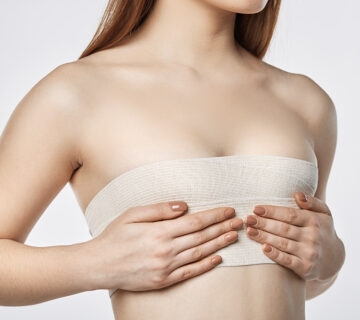Botox. Xeomin. Belotero. Restylane. Sculptra. There are so many dermal fillers and injectables available that it can be tough to determine the right one for you. Recently, hyaluronic acid fillers such as Juvéderm have become popular for their ability to stimulate collagen production and hydrate the skin, leaving a more youthful and glowing complexion. To help you determine if Juvéderm is the right option for you and your cosmetic goals, Buglino Plastic and Reconstructive Surgery has developed this brief overview.
What Is Juvéderm?
Juvéderm is a popular dermal filler consisting of hyaluronic acid, which naturally exists in the skin and helps retain water, for a hydrated complexion. In contrast to botulinum toxins, it plumps the skin, creating a youthful appearance. Juvéderm offers five products to meet several specific needs, such as adding volume to the lips, smoothing fine lines, or lifting and contouring the cheeks.
Approved Areas of Treatment
Each Juvéderm product is Food & Drug Administration (FDA) approved for a different purpose.
- Juvéderm Voluma treats volume loss in the cheeks and helps define the chin.
- Juvéderm Volbella temporarily augments and corrects perioral lines in the lips.
- Juvéderm Vollure XC remediates moderate to severe facial wrinkles and folds.
- Juvéderm Ultra XC plumps lips and treats perioral lines.
- Juvéderm Ultra Plus XC smooths fine lines and wrinkles in facial tissue.
At Woodbury, NY-based Buglino Plastic and Reconstructive Surgery, Dr. Anthony Buglino utilizes Juvéderm to treat moderate to severe wrinkles, restore facial volume, and plump lips.
Preparation, Procedure & Recovery
To prepare for a Juvéderm treatment, avoid waxing, bleaching, or tweezing the treatment area at least two days before treatment. It’s also critical you stop taking supplements one week before, avoid Aspirin, blood thinners, anti-inflammatory medications, and alcohol.
The procedure is fairly quick depending on the number of areas you want treated, taking from 15 minutes to an hour. During the appointment, the surgeon will inject the filler in the indicated areas. You may feel a slight pinch or prick at the injection spot.
There is little to no downtime associated with a Juvéderm treatment. Although you can resume normal activities, it’s advised you avoid strenuous work, alcohol consumption, and sun exposure for at least 24 hours following the injections. The results should appear within one week and last six to nine months.
Potential Side Effects
Although rare, possible side effects associated with Juvéderm include:
- Redness
- Swelling
- Tenderness or Pain
- Firmness
- Bruising
- Discoloration
- Itching
Most will disappear after one week. If they do not go away, contact your physician immediately.
How Is Juvéderm Different From Botox?
Juvéderm, unlike Botox, is a hyaluronic acid-based filler, meaning it’s made of a gel-like substance containing naturally occurring skin components and promoting hydration and collagen production. Botox, on the other hand, is a neurotoxin containing botulinum toxin A that relaxes muscles in the skin and smooths out wrinkles. While Juvéderm plumps lips, defines cheeks and chins, and smooths fine lines and wrinkles, Botox has a longer list of uses, including treating glabellar lines, crow’s feet, forehead wrinkles, eyelid twitching, crossed eyes, excessive sweating, muscle spasticity, migraines, and incontinence. In terms of results, Juvéderm has proven to outlast Botox, which spans up to 6 months.




